Interface Guidelines & Principles Consider Function First Presentation
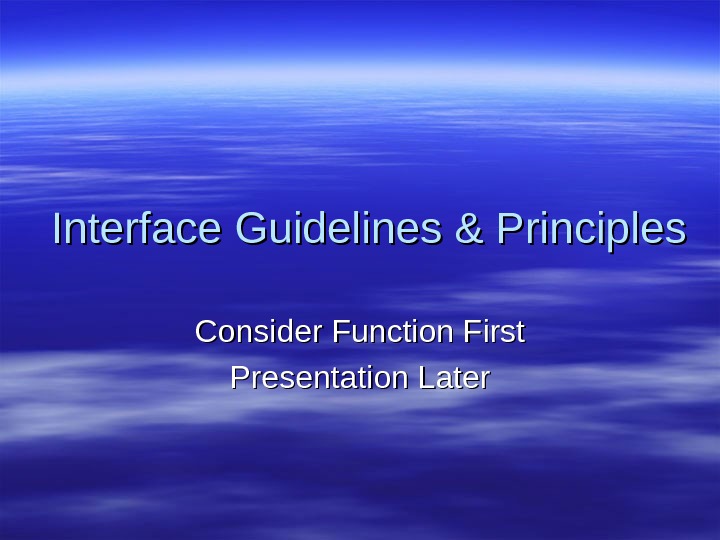
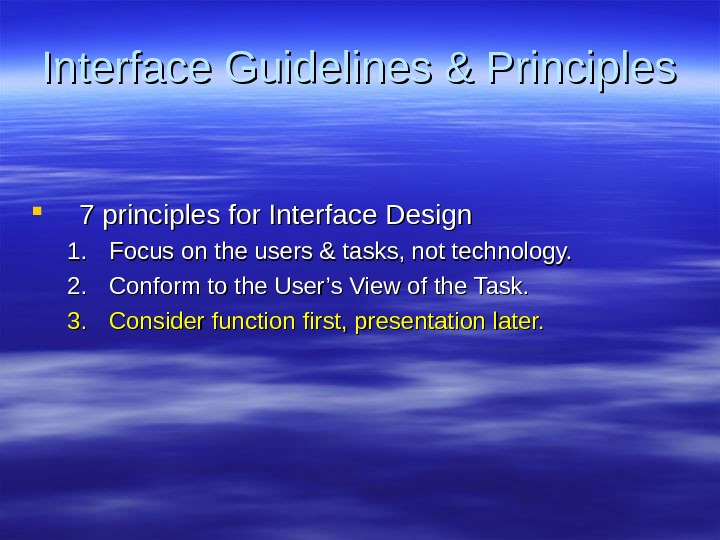
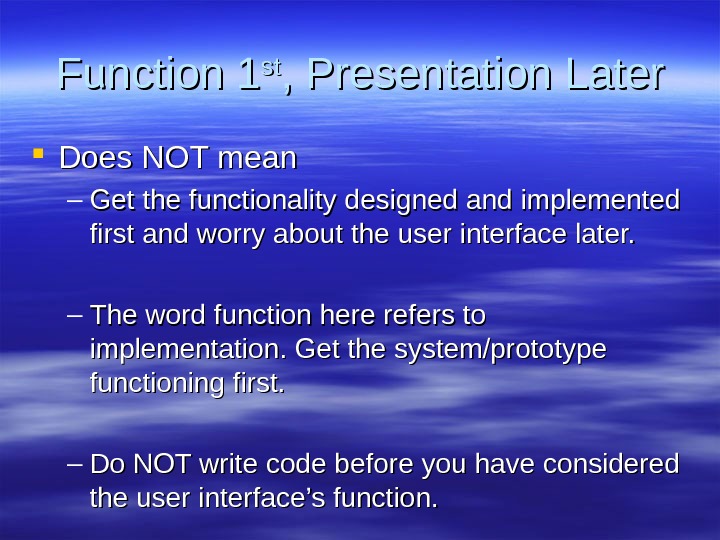
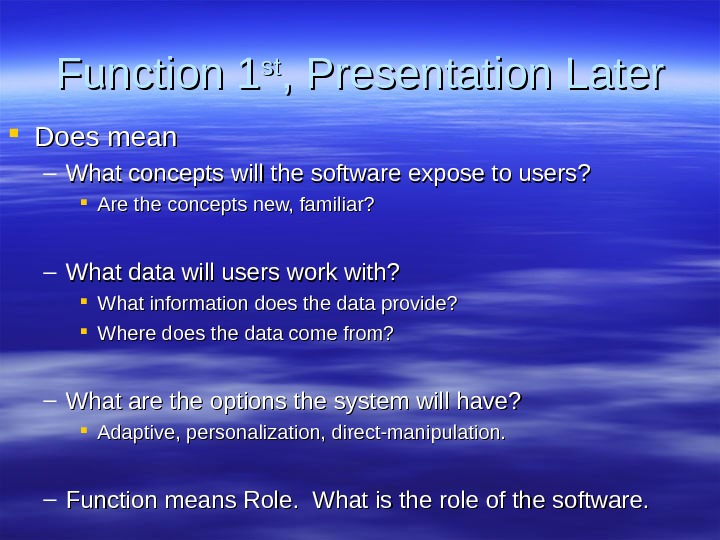
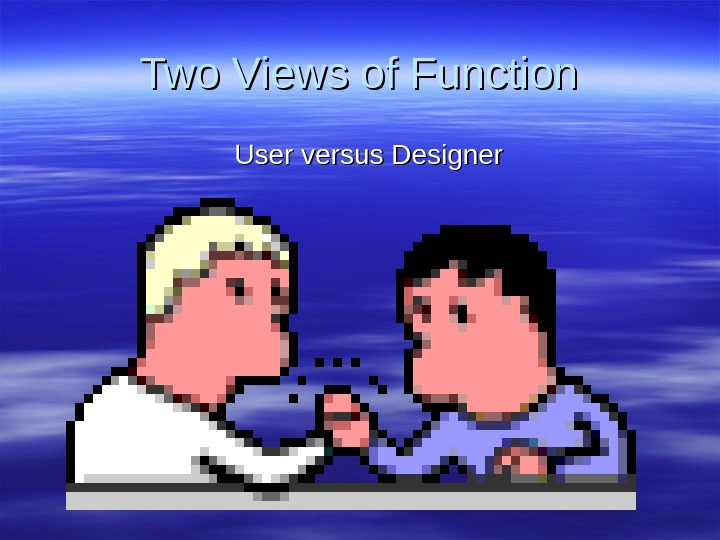
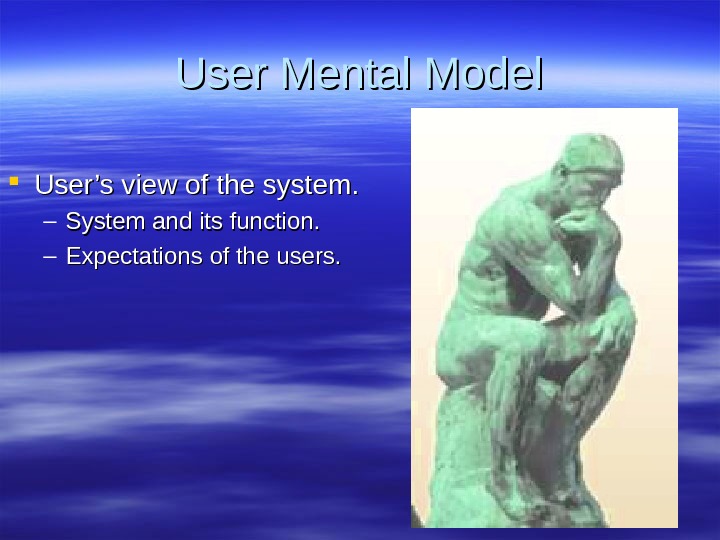
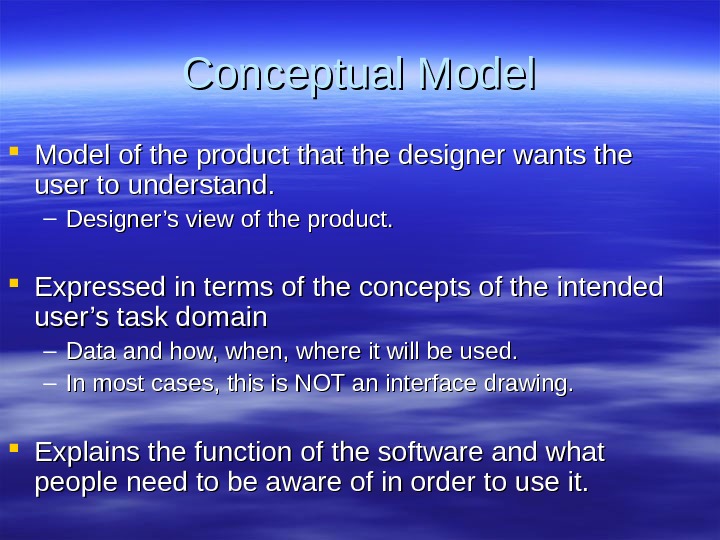
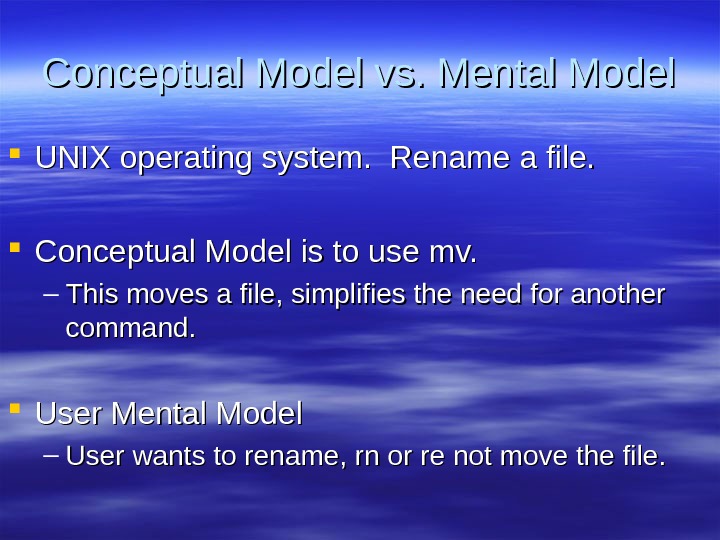
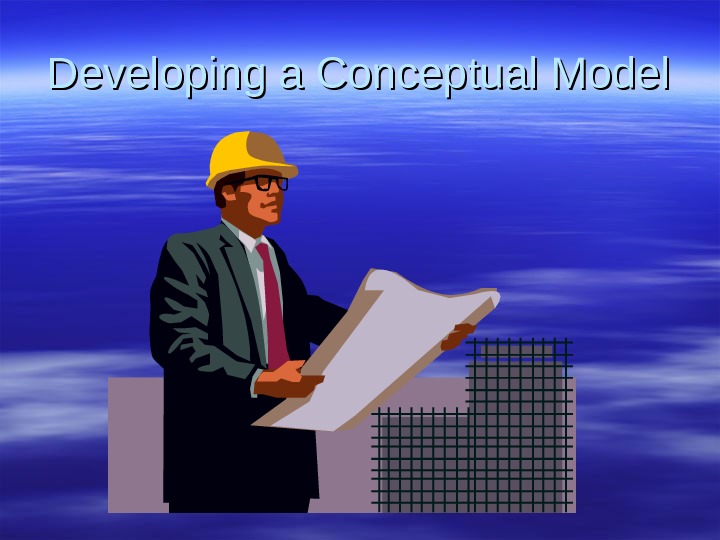
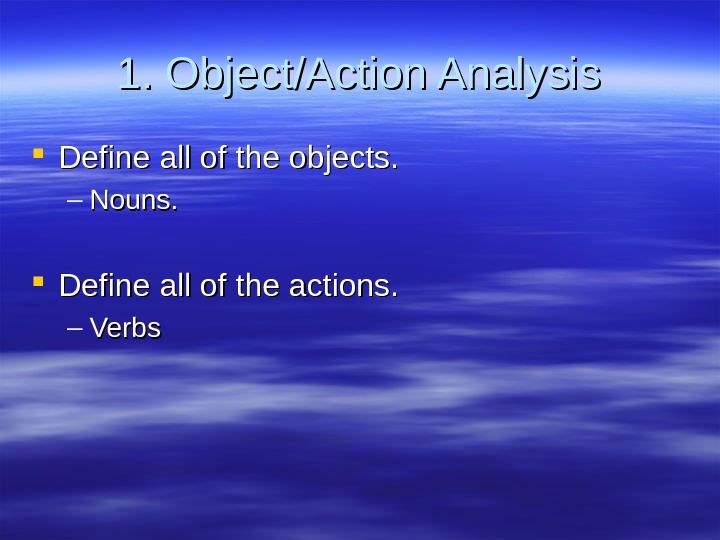
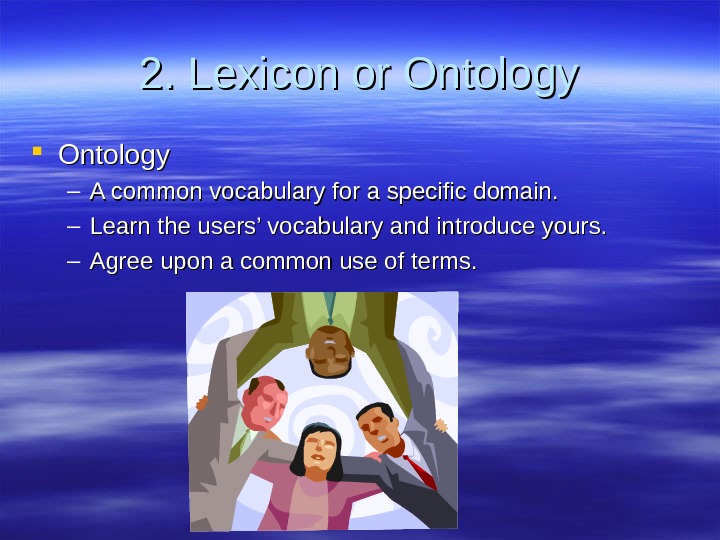
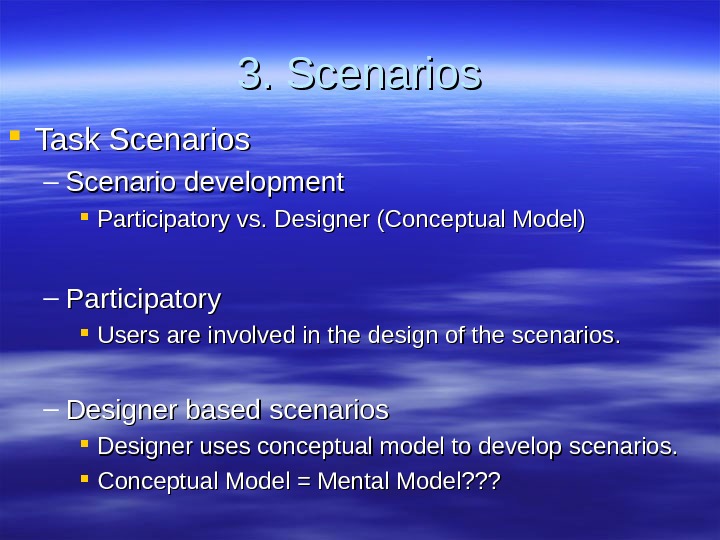
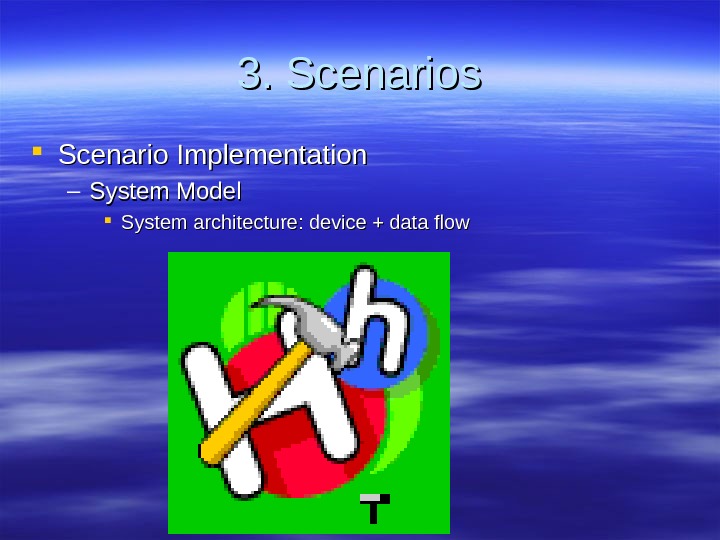
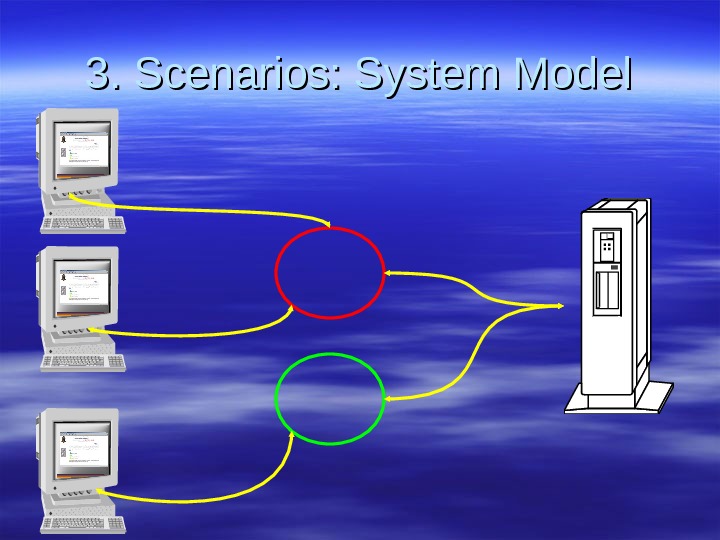
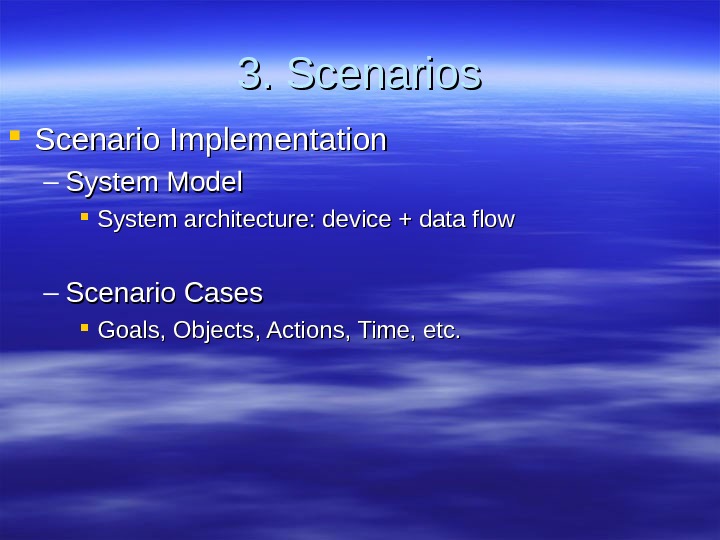
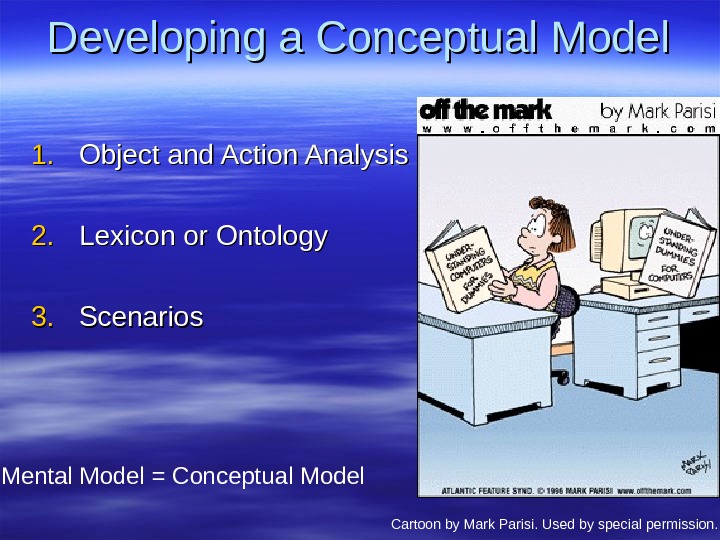
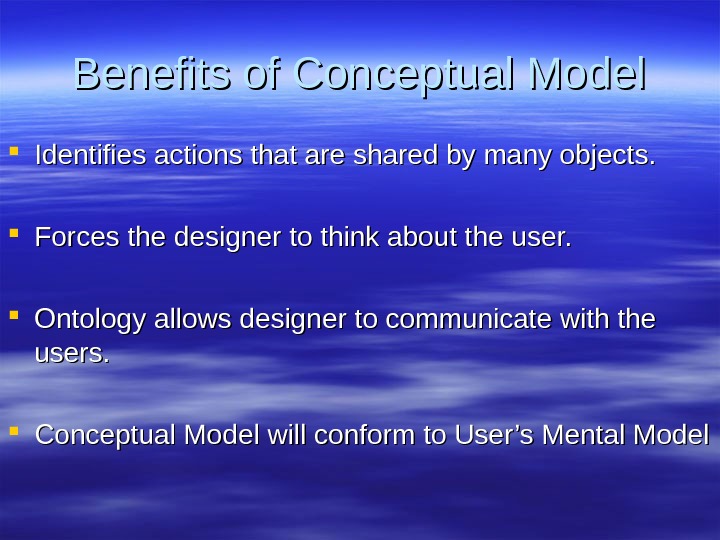
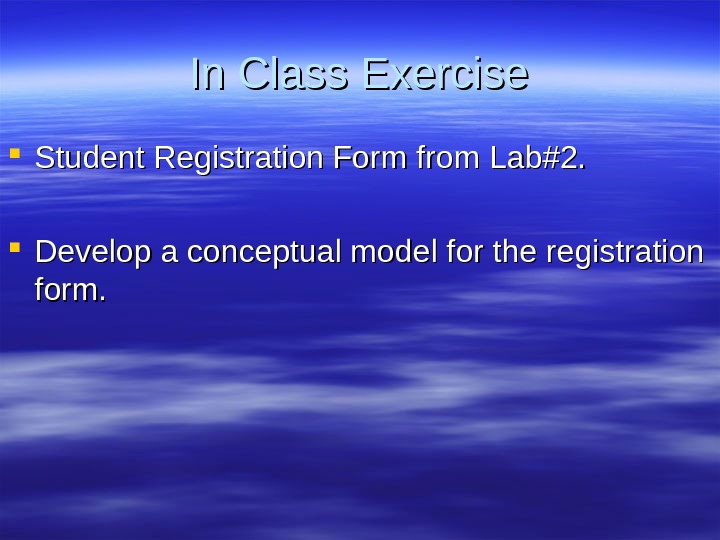
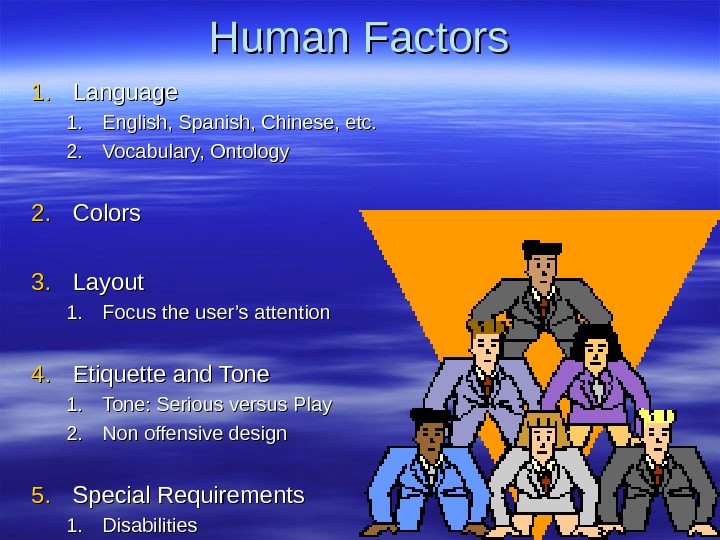
5-conceptual_model.ppt
- Размер: 1.4 Mегабайта
- Количество слайдов: 19
Описание презентации Interface Guidelines & Principles Consider Function First Presentation по слайдам
 Interface Guidelines & Principles Consider Function First Presentation Later
Interface Guidelines & Principles Consider Function First Presentation Later
 Interface Guidelines & Principles 7 principles for Interface Design 1. 1. Focus on the users & tasks, not technology. 2. 2. Conform to the User’s View of the Task. 3. 3. Consider function first, presentation later.
Interface Guidelines & Principles 7 principles for Interface Design 1. 1. Focus on the users & tasks, not technology. 2. 2. Conform to the User’s View of the Task. 3. 3. Consider function first, presentation later.
 Function 1 stst , Presentation Later Does NOT mean – Get the functionality designed and implemented first and worry about the user interface later. – The word function here refers to implementation. Get the system/prototype functioning first. – Do NOT write code before you have considered the user interface’s function.
Function 1 stst , Presentation Later Does NOT mean – Get the functionality designed and implemented first and worry about the user interface later. – The word function here refers to implementation. Get the system/prototype functioning first. – Do NOT write code before you have considered the user interface’s function.
 Function 1 stst , Presentation Later Does mean – What concepts will the software expose to users? Are the concepts new, familiar? – What data will users work with? What information does the data provide? Where does the data come from? – What are the options the system will have? Adaptive, personalization, direct-manipulation. – Function means Role. What is the role of the software.
Function 1 stst , Presentation Later Does mean – What concepts will the software expose to users? Are the concepts new, familiar? – What data will users work with? What information does the data provide? Where does the data come from? – What are the options the system will have? Adaptive, personalization, direct-manipulation. – Function means Role. What is the role of the software.
 Two Views of Function User versus Designer
Two Views of Function User versus Designer
 User Mental Model User’s view of the system. – System and its function. – Expectations of the users.
User Mental Model User’s view of the system. – System and its function. – Expectations of the users.
 Conceptual Model of the product that the designer wants the user to understand. – Designer’s view of the product. Expressed in terms of the concepts of the intended user’s task domain – Data and how, when, where it will be used. – In most cases, this is NOT an interface drawing. Explains the function of the software and what people need to be aware of in order to use it.
Conceptual Model of the product that the designer wants the user to understand. – Designer’s view of the product. Expressed in terms of the concepts of the intended user’s task domain – Data and how, when, where it will be used. – In most cases, this is NOT an interface drawing. Explains the function of the software and what people need to be aware of in order to use it.
 Conceptual Model vs. Mental Model UNIX operating system. Rename a file. Conceptual Model is to use mv. – This moves a file, simplifies the need for another command. User Mental Model – User wants to rename, rn or re not move the file.
Conceptual Model vs. Mental Model UNIX operating system. Rename a file. Conceptual Model is to use mv. – This moves a file, simplifies the need for another command. User Mental Model – User wants to rename, rn or re not move the file.
 Developing a Conceptual Model
Developing a Conceptual Model
 1. Object/Action Analysis Define all of the objects. – Nouns. Define all of the actions. – Verbs
1. Object/Action Analysis Define all of the objects. – Nouns. Define all of the actions. – Verbs
 2. Lexicon or Ontology – A common vocabulary for a specific domain. – Learn the users’ vocabulary and introduce yours. – Agree upon a common use of terms.
2. Lexicon or Ontology – A common vocabulary for a specific domain. – Learn the users’ vocabulary and introduce yours. – Agree upon a common use of terms.
 3. Scenarios Task Scenarios – Scenario development Participatory vs. Designer (Conceptual Model) – Participatory Users are involved in the design of the scenarios. – Designer based scenarios Designer uses conceptual model to develop scenarios. Conceptual Model = Mental Model? ? ?
3. Scenarios Task Scenarios – Scenario development Participatory vs. Designer (Conceptual Model) – Participatory Users are involved in the design of the scenarios. – Designer based scenarios Designer uses conceptual model to develop scenarios. Conceptual Model = Mental Model? ? ?
 3. Scenarios Scenario Implementation – System Model System architecture: device + data flow
3. Scenarios Scenario Implementation – System Model System architecture: device + data flow
 3. Scenarios: System Model
3. Scenarios: System Model
 3. Scenarios Scenario Implementation – System Model System architecture: device + data flow – Scenario Cases Goals, Objects, Actions, Time, etc.
3. Scenarios Scenario Implementation – System Model System architecture: device + data flow – Scenario Cases Goals, Objects, Actions, Time, etc.
 Developing a Conceptual Model 1. 1. Object and Action Analysis 2. 2. Lexicon or Ontology 3. 3. Scenarios Mental Model = Conceptual Model Cartoon by Mark Parisi. Used by special permission.
Developing a Conceptual Model 1. 1. Object and Action Analysis 2. 2. Lexicon or Ontology 3. 3. Scenarios Mental Model = Conceptual Model Cartoon by Mark Parisi. Used by special permission.
 Benefits of Conceptual Model Identifies actions that are shared by many objects. Forces the designer to think about the user. Ontology allows designer to communicate with the users. Conceptual Model will conform to User’s Mental Model
Benefits of Conceptual Model Identifies actions that are shared by many objects. Forces the designer to think about the user. Ontology allows designer to communicate with the users. Conceptual Model will conform to User’s Mental Model
 In Class Exercise Student Registration Form from Lab#2. Develop a conceptual model for the registration form.
In Class Exercise Student Registration Form from Lab#2. Develop a conceptual model for the registration form.
 Human Factors 1. 1. Language 1. 1. English, Spanish, Chinese, etc. 2. 2. Vocabulary, Ontology 2. 2. Colors 3. 3. Layout 1. 1. Focus the user’s attention 4. 4. Etiquette and Tone 1. 1. Tone: Serious versus Play 2. 2. Non offensive design 5. 5. Special Requirements 1. 1. Disabilities
Human Factors 1. 1. Language 1. 1. English, Spanish, Chinese, etc. 2. 2. Vocabulary, Ontology 2. 2. Colors 3. 3. Layout 1. 1. Focus the user’s attention 4. 4. Etiquette and Tone 1. 1. Tone: Serious versus Play 2. 2. Non offensive design 5. 5. Special Requirements 1. 1. Disabilities
